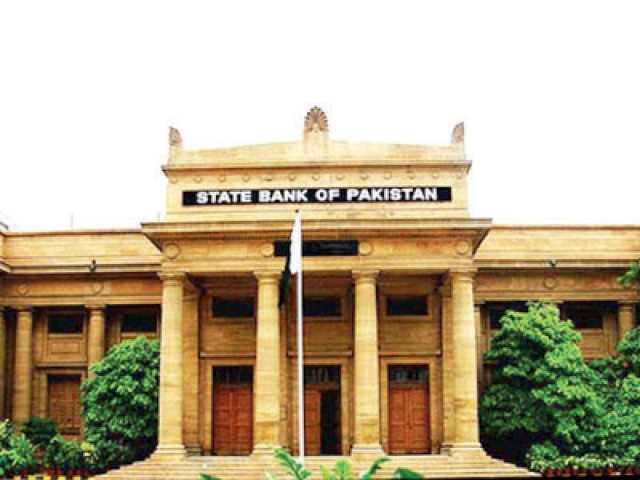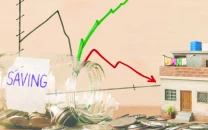SBP holds firm on growth forecast
Central bank projects 2-3% growth for FY23-24, calls for structural reforms

Pakistan’s central bank has projected that the country’s economic growth would remain moderate, sticking to its original forecast of 2-3% growth in the ongoing fiscal year 2023-24. It says that achieving a higher growth trajectory over the medium to long run depends on reforms addressing lingering structural issues.
In its report on the ‘State of Pakistan’s Economy for the First Half of Fiscal Year 2023-24’, the State Bank of Pakistan (SBP) said, “Despite some improvement in macroeconomic indicators, Pakistan’s economy continues to grapple with structural bottlenecks that hamper the achievement of low and stable inflation with sustainable growth. The major issues include limited savings, low investments in physical and human capital, weak productivity, stagnant exports, a narrow tax base, and inefficiencies in public sector enterprises (PSEs).”
“Additionally, political uncertainty exacerbates the situation through inconsistency in economic policies, weak governance, and public administration. These underscore the need for policy reforms to ensure sustainable development over the medium to long term.”
The central bank’s forecast for growth in the range of 2-3% remains higher than the International Monetary Fund (IMF)’s revised down projection at 2% for FY24, suggesting that the SBP remains more optimistic than the creditor. The SBP said that the modest economic recovery in the first half of FY24 is expected to continue in the second half of FY24. This is also reflected by the improvement in business confidence about expected economic conditions since November 2023.
High-frequency indicators suggest a moderate recovery in economic activity from November 2023 onwards. In addition to a rebound in cotton and rice production, the prospects for a good wheat harvest during FY24 have also increased. This is mainly due to a higher area under cultivation, better input availability, and favourable weather conditions.
The continued easing of foreign exchange (FX) constraints has ameliorated the supply chain situation and availability of industrial raw materials, which is supporting some of the large industries.
Going forward, however, further adjustments in energy prices (likely upward revision in gas and power tariffs) and fiscal consolidation, warranted for slowing the pace of debt accumulation, may continue to weigh on economic activities.
Continued tight monetary policy stance and fiscal consolidation are expected to keep domestic demand in check. Moreover, the anticipated increase in wheat production may help maintain a downward trajectory in food inflation by improving supply and discouraging any speculative sentiments.
“On the other hand, any significant increase in administered energy prices may offset the impact of these positive developments on the inflation outlook. Incorporating these factors, the SBP has revised (up) its inflation projection range to 23–25% for FY24.”
Escalating geopolitical tensions, unfavourable weather conditions, adverse movements in global oil prices, and subsequent external account pressures are some important upside risks to the improved outlook.
Interest payments, non-tax revenue surge
Interest payments sharply soared to 61.6% of total revenue in the first half of FY24 compared to 54.8% in the same half of the last year, mainly due to the maintenance of the policy rate at a record high by the central bank, burdening the economy and making debt unsustainable.
In other words, interest payments surged to 4% of GDP in the half-year compared to 3.1% of GDP in the same half of the last year, widening the fiscal deficit to 2.3% in the half-year compared to 2% in the same half of the previous year. Non-interest expenditure also rose due to increased disbursement of power subsidies, grants for the settlement of contingent liabilities pertaining to PSEs, and higher expenses for running the civil government, defence, and pensions, the report said.
On the other hand, the increase in total revenue (as a percent of GDP) was largely due to higher non-tax revenue, as tax-to-GDP improved only slightly. New tax measures, a moderate recovery in economic activities, higher inflation, rupee depreciation compared to the first half of FY23, and an increase in corporate profits and returns on deposits supported the Federal Board of Revenue (FBR) tax collection to grow by nearly 30% in the half-year under review.
The primary contributors to non-tax revenues were including higher SBP profit, increased collection from petroleum development levy (PDL) primarily due to a hike in PDL rates, and interest receipts on federal loans to PSEs and provinces.
CAD, export, remittances improve
The central bank also foresaw a lower current account deficit (CAD) compared to earlier and a boost in foreign exchange reserves in FY24.
“The external account outlook has improved. The CAD is expected to be lower than the earlier projection, whereas disbursement of the last tranche of $1.1 billion under the IMF’s SBA would help maintain external buffers.” Moreover, a slightly improved global outlook and domestic growth prospects are anticipated to boost foreign exchange earnings from exports and remittances. While resilient global demand may have a positive impact on Pakistan’s exports, moderating global commodity prices may significantly suppress import prices, leading to an overall contraction in the import bill and hence improvement in the trade balance.
Taking these factors into account, the SBP projects the current account deficit in the range of 0.5–1.5% of GDP for FY24. This outlook remains susceptible to unfavourable movement in international commodity prices and continued tight global financial conditions.
Under these circumstances, it is imperative to boost exports through reforms aimed at enhancing productivity and attracting foreign direct investment (FDI) in export-oriented sectors to keep the CAD at a sustainable level without constraining domestic economic activities.
Published in The Express Tribune, May 15th, 2024.
Like Business on Facebook, follow @TribuneBiz on Twitter to stay informed and join in the conversation.


















COMMENTS
Comments are moderated and generally will be posted if they are on-topic and not abusive.
For more information, please see our Comments FAQ